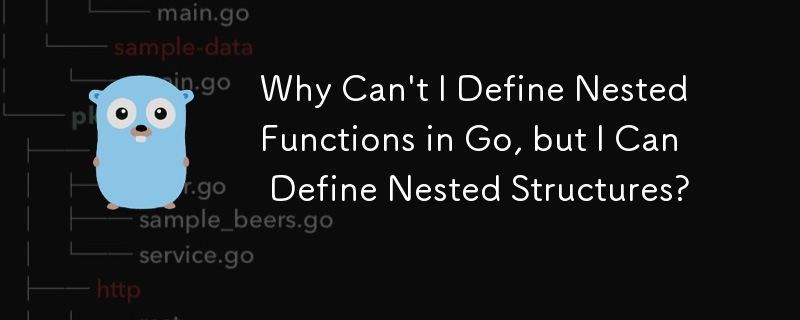

Go: Nested Classes Within Functions
In Go, it is possible to define nested structures inside functions, as demonstrated by the code block:
<code class="go">func f() {
// Nested struct Cls inside f
type Cls struct {
...
}
}</code>However, it is not possible to declare nested functions within functions, except for lambda functions. This may seem unusual given the support for nested structures.
Alternatives and Workarounds
While it is not possible to define nested functions in the traditional sense, there are alternative approaches to achieve similar functionality:
1. Function Literals:
Function literals allow you to define an anonymous function and store it in a variable. This function can then be used as an argument to another function, or within the function it was defined in. For example:
<code class="go">func f() {
foo := func(s string) {
fmt.Println(s)
}
foo("Hello World!")
}</code>In this example, a function literal is assigned to the variable foo within the f function. When foo is called with the string argument, it prints "Hello World!" to the console.
2. Closures:
Closures allow you to create functions that have access to variables defined in the scope they were created in. This enables you to effectively "nest" functions by defining them within a closure. For example:
<code class="go">func f() func(s string) {
return func(s string) {
fmt.Println(s)
}
}
foo := f()
foo("Hello World!")</code>In this example, the f function returns a function literal that has access to the variables in the function's scope. This allows you to call the returned function and pass it arguments, even though it was defined within f.
It is important to note that while these alternatives provide some flexibility, they are not the same as traditional nested functions.
The above is the detailed content of Why Can\'t I Define Nested Functions in Go, but I Can Define Nested Structures?. For more information, please follow other related articles on the PHP Chinese website!




